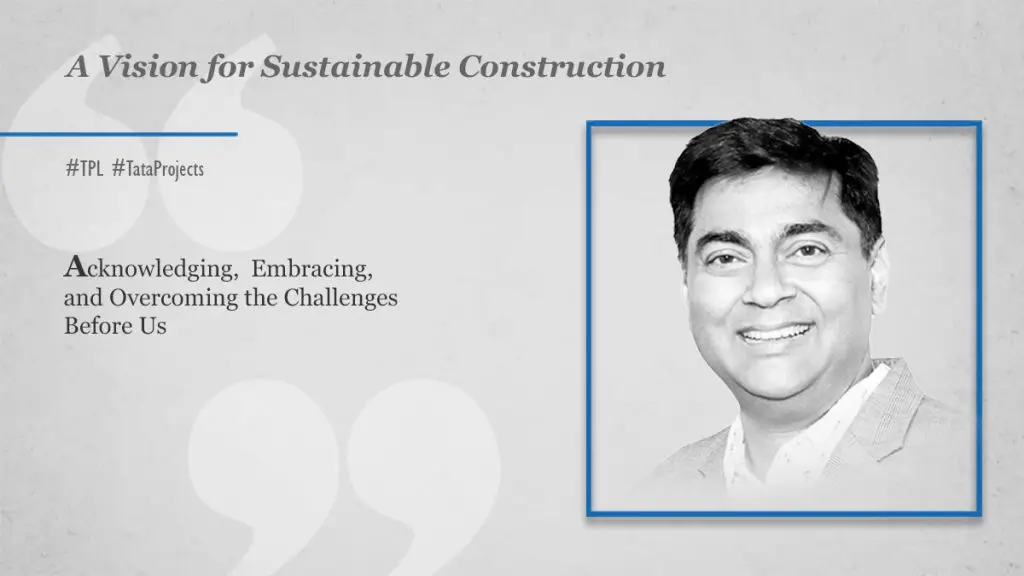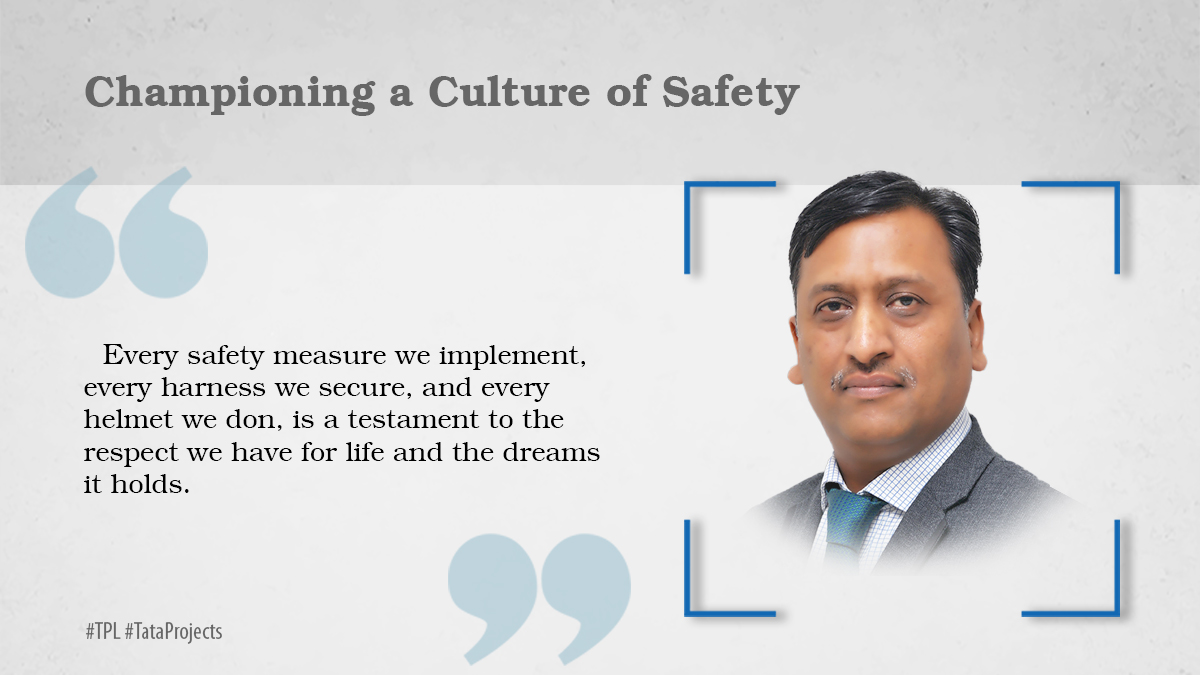Acknowledging, Embracing and Overcoming the Challenges Before Us
The Climate Challenge: 2023 has been officially recognized as the warmest year on record in the history of our planet, getting perilously close to the 1.5 Deg temperature rise target agreed in 2016 at the COP-21 in Paris. Extreme climate events spread across the globe in 2023, which UN Secretary-General António Guterres aptly summed up as “A mere preview of the catastrophic future that awaits, if we don’t act now”. While the world struggles to find a consensus on the path to transition from fossil fuels and set Globally acceptable mandates, as we witnessed recently at COP 28 in Dubai, our Green Planet is not giving us the time to debate on actions but forcing us to act. To meet a Global Net Zero 2050 target, the World needed to cut down the Global Emission intensity by~ 41% by 2030, taking 2019 as the base, and we are nowhere close to be on track as we stand in 2024.
The positives of COP 28 was the recognition on the urgent need to accelerate a just and equitable Energy Transition to cleaner alternatives. The agreement of Tripling Renewable Energy Capacity and Doubling the global average annual rate of energy efficiency improvements by 2030 are impressive targets that we absolutely need to achieve.
Now how does this affect our construction industry?
Obviously, there is going to be Trillions of dollars of investment around the globe in replacing the existing fossil based infra, with greener alternatives. Specifically for India, the only major economy on a high growth curve with a projected 4 to 5 % yearly additional Energy demand, the investment opportunities in Green Infra are massive. And our industry strives, when there is any investment cycle. However, the Construction Industry also bears the heavy burden of being the largest single contributor to Global Carbon footprint, and ought to get our act right, to ensure we moderate our contribution to the ever shrinking Carbon Budget available, as the Green infra is built.
The construction industry accounted for over 34 per cent of energy demand and around 37 per cent of energy and process-related CO2 emissions in 2022, and this % would only grow, as some of the other industries like power and mobility lower their Carbon footprint in the coming years.
Acknowledging the Challenge: We have to accept that the construction industry is one of the critical “hard to abate” sector, primarily built around steel and cement facing multiple challenges to be Net Zero. Reducing the embodied carbon and transitioning to carbon-efficient methods and materials remains the most significant challenge for us. The Cement industry, by its very nature of its production process, generates the most CO₂ emissions per dollar of revenue and is responsible for about a quarter of all industry CO₂ emissions,. Similarly, Green Steel, in its truest form, is still years away from reality, definitely in the Indian context.
In addition, there are many challenges that need to be dealt with if this industry truly wants to define a Net Zero target.
- Restrictions on expenditure and reluctance to incur higher capital cost when needed to include Sustainable practises.
- Lack of long-term perspective, as well as a lack of awareness around Sustainability and ESG norms. Globally, and India not being an exception, the general perception that addressing sustainability always leads to incurring greater capital cost, leads to resistance to change.
- Insufficient/inconsistent policies, regulations, incentives, and lack of commitment by leadership also becomes an impediment.
- Local market structures and ease of entry have resulted in a fragmented landscape of mostly small companies with limited economies of scale. And
- Insufficient integration and link-up in the industry, both upstream and downstream, and
- Finally limited research and development efforts towards sustainable solutions
All or a combination of some leads to a myopic approach towards the construction of the built environment. For eg; In the built environment, approximately 75% of carbon emissions occur during a building’s operating cycle. Focus on capital expenditure during construction, without addressing operational carbon impact, fosters resistance to change.
Embracing the Challenge: Tata Projects stands resolute in its commitment to be the most Sustainable Construction company, aligned with the broader vision of the Tata Group, with an ambitious Net Zero 2045 target. We have incorporated Sustainability as an integral part of our newly launched Mission, Vision and Values, showing our commitment to the cause.
There is tremendous work going around the globe on pathways to low carbon alternatives that reduce the embodied Carbon in construction. In cement production, apart from replacing the Energy requirements through alternates, path breaking concepts being developed to reduce the percentage of clinker in final product, (the production of which emits maximum CO2) Similarly pioneering developments are being orchestrated by our Group company Tata Steel, towards lowering the per tonne Carbon emission in the production of steel. Tata Projects is working very closely with our cement and steel vendors and seeking pioneering role in this space in India.
Our sustainability agenda revolves around resource efficiency, low-carbon operations, green vendors, and engineering innovations. Redesign, Reduce and Recycle are the three pillars on which we want to build our Sustainability agenda.
With initiatives like recycling construction & and demolition (C&D) waste and producing M-Sand which replaces natural sand, using modular construction techniques such as pre-cast and prefabricated elements, not only helped us improve our overall productivity but also helped reduce material wastage. Embracing alternate materials such as Fly ash, GGBS, and AAC blocks derived from industrial waste, we are rewriting the narrative of construction. PPC cement, coupled with innovative solutions for recycling construction waste, underscores our dedication to fostering a circular economy.
This commitment echoes across our project sites, emphasizing material management, modular construction techniques, and the cultivation of a sustainable supply chain.
Water is a vital and scarce communal resource, prompting us to spearhead initiatives for diminishing, repurposing, recycling, and regenerating water within our operations, thereby diminishing our reliance on freshwater. In our pursuit of refined measurement, vigilant monitoring, and effective management, we’ve implemented water meters across various sites. The consistent reduction of our water footprint has been achieved through the strategic utilization of curing compounds, PC-based admixtures, synchronized curing pump systems, and the deployment of sprinklers. Notably, we’ve established Water Treatment Plants (WTP) and Sewage Treatment Plants (STP) at our labour colonies, ensuring water recycling for use in other activities. Our overarching goal is to attain a ‘water-neutral’ status in the years to come. In fact, for the New Parliament Building project, we were close to being Water Neutral, recycling 98% of the total water used.
In circular economy, at the New Parliament Building Project we orchestrated an intricately designed system to collect, segregate, and repurpose plastic waste generated throughout the project’s lifecycle. From plastic packaging sourced from furniture, personal protective equipment, stone wrappings, to PET bottles utilized during client visits, all were meticulously gathered through designated collection bins and plastic banks strategically positioned across the site. This eclectic mix of waste plastics transformed into value-added products including T-shirts, temporary barricades, pen stands, carry bags, and more. This innovative initiative successfully diverted approximately 850 kg of plastic waste from landfills, breathing new life into these materials.
Technology is key enabler in our Net Zero roadmap. The use of Technology to ensure optimized design leading to reduction in material consumption and facilitating ‘first time right’ & ‘zero rework’ methodology . Our projects are being delivered more effectively by using of BIM (Building Information Modelling) in the form of 3D digital representation of the projects for scheduling, which helps us to reduce the turnaround time, wastages. In some select cases, we have used 3D BIM overlaid with 4D details on project and resource planning, operations review and formulating catch-up plans. Together with augmented and VR technology usage, seamless interaction between project sites & office are enabled.
Technology is playing a pivotal role in another key focus area for Tata Projects, Decarbonizing our project sites, a subject very close to our MD’s heart. Our construction sites employ heavy equipment and machinery having a sizeable energy demand, and only innovative technologies can help us address this challenge and be a pioneer in that space. We are doing some path breaking work in this area, a topic I would like to cover in my next blog.
Overcoming the challenge: Planet Earth has seen its own rhythm of climate related events in its billions of years of history, but for the modern human civilization, this is a new challenge.
While geo-political events, economic downturns, and pandemics have tested the human civilization historically, and we have “survived” in the past. But the climate challenge that we have thrust on ourselves, (unintentionally though), through the rampant and unabated use of fossil fuel, poses a true existential crisis.
For the construction industry, like many others, this path to Net Zero will be new ride. While the end goal is clear, the path to the goal seems a bit fuzzy today. Tatas have been a pioneer in various aspects in the industrial development of the country and are taking a pioneering role in Sustainability through the “Aalingana” initiative, that provides the North Star to all Group companies. And Tata Projects takes the responsibility to lead the way for the Indian construction industry.
A couple of case studies I mentioned above, involved the New Parliament Building that we completed last year. It shows, when we put a different lens to our construction practises, presently available technology platforms allow us to meet some of the Sustainability targets.
No single player in the construction ecosystem can tackle the complex issues of Green transition on his own, and there is an urgent need for players to collaborate and increase transparency to accelerate the move. We need to have the active participation of all stake holders in our eco-system; our clients, the regulators, project financers and our vendors in this journey. Together, we can and we will.
Sourabh Mukherjee,
Executive Vice President – Clean Energy & Sustainability,
Tata Projects Limited
Simplify. Create.
























